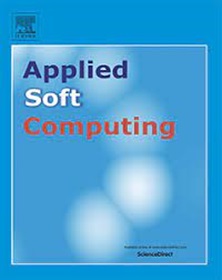针对震网病毒在气隙临界环境下传播的非线性延迟微分系统的深度学习网络设计
IF 7.2
1区 计算机科学
Q1 COMPUTER SCIENCE, ARTIFICIAL INTELLIGENCE
引用次数: 0
摘要
在宁静的气隙环境中,数字坚韧的守护者必须认识到单一防御机制的局限性,这种防御架构的基石在于主动检测威胁和快速反应能力。在本研究中,设计了一种基于深度学习的双向LSTM架构,用于准确捕获与关键控制基础设施网络复杂相连的气隙环境中Stuxnet病毒的时滞差分传播动力学。为了解决在破坏气隙环境中遇到的挑战,数学模型引入了时间延迟因子τ1, τ2和τ3,分别用于利用易受影响的USB介质,利用受感染的USB介质的易受影响的气隙计算机和使用受感染的计算机连接的易受影响的计算机。可移动存储介质作为桥接气隙环境和控制连接到关键系统的工业控制器的关键环节,从而对整个系统的完整性构成重大威胁。综合时相仿真可作为时延差分系统中涉及震网病毒渗透气隙环境的各种场景下双层双向LSTM网络的真实情况。与数值结果的详细对比分析表明,LSTM网络产生的预测之间的差异很小,均方误差(MSE)值在10−7的范围内,强调了所提出的神经网络在预测气隙情况下病毒复杂动态方面的有效性、鲁棒性和稳定性。本文章由计算机程序翻译,如有差异,请以英文原文为准。
Design of deep learning networks for nonlinear delay differential system for Stuxnet virus spread in an air gapped critical environment
Within the tranquil confines of air-gapped environment, the custodians of digital fortitude must recognize the limitations of a singular defense mechanism, the cornerstone of this defensive architecture lies in proactive threat detection and rapid response capabilities. In the presented study, a deep-learning based bidirectional LSTM architecture is designed to accurately capture the time-delay differential propagation dynamics of the Stuxnet virus in an air gapped environment intricately linked with a network of critical control infrastructure. To address the challenges encountered in compromising the air gapped environment, the mathematical model introduces time delay factors , and , necessary for exploiting the susceptible USB media, susceptible air gapped computers utilizing infected USB media and connected susceptible computers using infected computers respectively. Removable storage media serves as a pivotal link in bridging the air gapped environment and controlling the industrial controllers connected to critical systems thereby posing a significant threat to the integrity of the entire system. Synthetic temporal simulations serve as the ground truth for dual-layer bidirectional LSTM networks exactment on various scenarios involving the infiltration of the air-gapped environment by the Stuxnet virus in a time delay differential system. A detailed comparative analysis with numerical outcomes showed minimal disparity between the predictions generated by LSTM networks, with mean squared error (MSE) values falling within the range of underscoring the effectiveness, robustness, and stability of the proposed neural networks in predicting the complex dynamics of virus in air gapped situation.
求助全文
通过发布文献求助,成功后即可免费获取论文全文。
去求助
来源期刊

Applied Soft Computing
工程技术-计算机:跨学科应用
CiteScore
15.80
自引率
6.90%
发文量
874
审稿时长
10.9 months
期刊介绍:
Applied Soft Computing is an international journal promoting an integrated view of soft computing to solve real life problems.The focus is to publish the highest quality research in application and convergence of the areas of Fuzzy Logic, Neural Networks, Evolutionary Computing, Rough Sets and other similar techniques to address real world complexities.
Applied Soft Computing is a rolling publication: articles are published as soon as the editor-in-chief has accepted them. Therefore, the web site will continuously be updated with new articles and the publication time will be short.
 求助内容:
求助内容: 应助结果提醒方式:
应助结果提醒方式:


